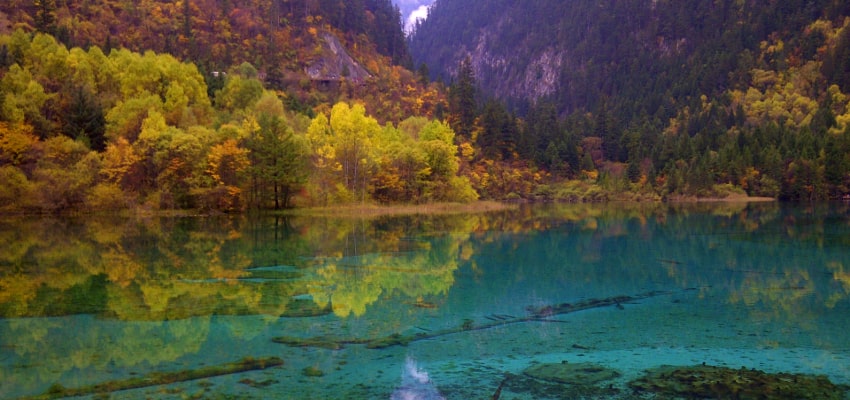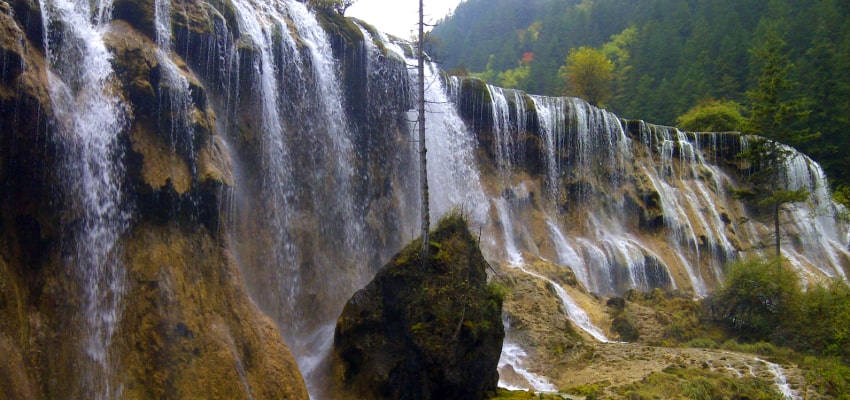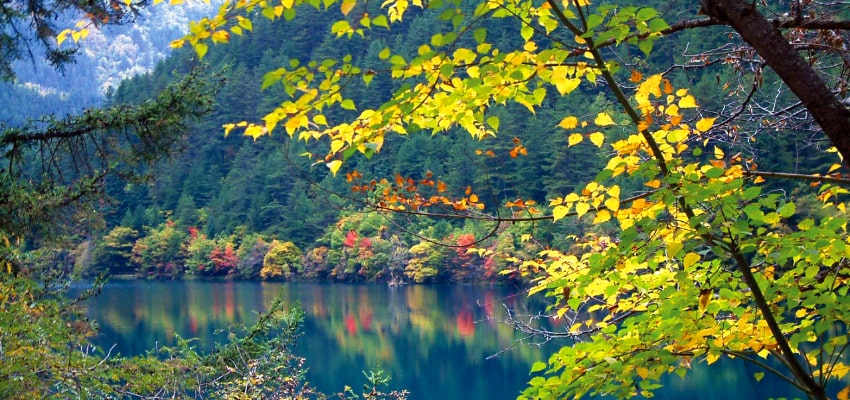Jiuzhaigou National Park, a UNESCO World Heritage Site, in China’s Sichuan Province is a true gem of an attraction. Meaning ‘Nine Village Valley’, Jiuzhaigou is named for the nine Tibetan villages that dot the sprawling park. According to Tibetan legend, Woluo Semo, a beautiful goddess, was gifted a magical mirror made of wind by her lover Dage. As misfortune would have it, a jealous demon forced the goddess to drop the mirror, causing it to shatter and form the 114 glittering lakes that make up Jiuzhaigou. It’s these bluer-than-blue lakes that once attracted over seven million visitors annually to the park.

The mirrored, turquoise blue waters of Jiuzhaigou National Park | Image by An Zhenyi
Then, on August 8, 2017, a 7.0-magnitude earthquake rocked Jiuzhaigou County, killing at least 24 people, injuring more than 500, and destroying much of the renowned national park. Landslides were triggered, blanketing the formerly lush forests with debris and muddying the park’s iconic crystalline, cerulean-blue lakes, or causing them to drain entirely. A shadow of its former self, Jiuzhaigou was forced to close – a gut punch to the area’s tourism industry.
Thankfully, now over two years later, Jiuzhaigou National Park is back open for visitors on a trial basis. Although a few sites have been open to the public since last March, most of the park has remained closed to allow the restoration process to continue, capping visitors to only 2,000 each day. As of September 27, 85% percent of the UNESCO World Heritage Site is ready for visitors.

Nuorilang Waterfall before the earthquake | Image by An Zhenyi
The restoration process hasn’t been easy. Sparkling Lake was marred by a chasm stretching 50 meters long, 20 meters wide, and 12 meters deep, and is still yet to reopen. Nuorilang Waterfall, one of the icons of the park, sustained significant damage but has fortunately reopened for visitors, although the view won’t be quite the same as before. As for Jiuzhaigou’s crystal-clear waters, thanks to being fed by underground rivers and the park being covered nearly entirely by forest, the lakes were able to purify themselves. And the dissolving limestone continues to provide the lakes with their signature turquoise hue.

Fall colors at Jiuzhaigou National Park
For travelers interested in visiting Jiuzhaigou, there are a few important things to note. While most of the park is open again, some areas are still off-limits. However, travelers do have access to scenic spots in all of Zezhawa Valley, most of Shuzheng Valley (except for Sparkling Lake), and some of Rize Valley. The rest of the park is set to reopen in 2020. Currently, scenic areas are only open between the hours of 8:30am and 5pm. To help manage the park’s capacity and maintain the safety of both the visitors and the delicate ecosystem, entries are capped at a max of 5,000 people each day. Additionally, all travelers must purchase tickets from designated websites prior to the visit and be part of an organized tour (like with AsiaTravel). Unfortunately, it’s still unknown if, or when, Jiuzhaigou will open its gates to independent travelers.
Needless to say, we couldn’t be happier to see this national treasure almost completely reopened and are excited to be able to share its breathtaking beauty with our travelers once again.
